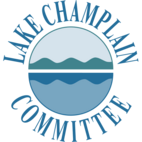Lake Look - Aquatic Invaders in Lake Champlain
When you look out at Lake Champlain from shore, you might see a swath of blue water shimmering below the mountains. Beneath that serene expanse is a buzz of ecological activity. Aquatic organisms in the lake are adapted specifically to each other, with zooplankton eating algae and bacteria, while fish, insects, and even some plants feed on zooplankton. A systems-level dance of life and death is performed under the surface of the lake, and it exists in a balance. Aquatic invasive species disrupt that balance.
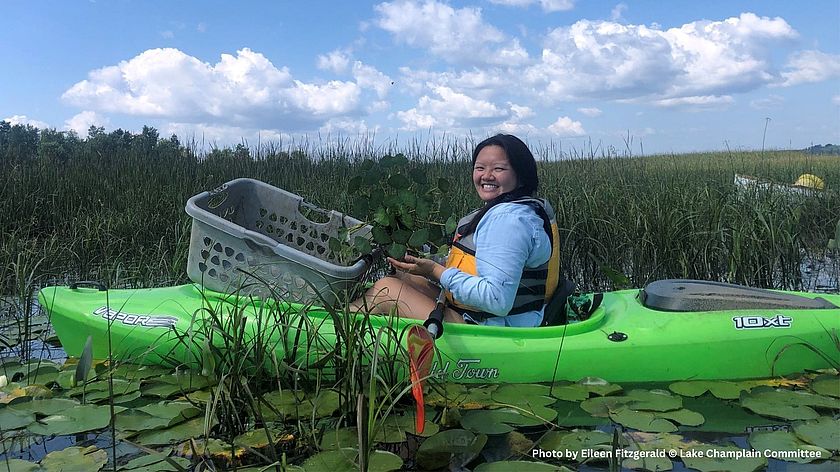
Lake Champlain currently has 51 known aquatic non-native and invasive species of plants, fish, mussels, and other freshwater dwellers. What exactly is an invasive species? Often the terms nuisance, exotic, and invasive are used interchangeably; however, they are not synonymous. A nuisance species is one that has adverse ecological or economic impacts. An exotic species is one that has been purposefully or accidentally introduced to an area outside its natural geographic range, but may not pose any threat to the natural communities in which they are introduced. An invasive speciesis the combination of these two types: it is an organism that has been introduced to an area outside its natural range, which causes ecological and economic harm. Take zebra mussels as an example. Native to lakes of southern Russia, zebra mussels were transported to the Great Lakes in the ballast water of transatlantic freighters. They were discovered in southern Lake Champlain in July 1993 and since then have infested most suitable habitat in the lake. They reproduce quickly and attach to any hard substrate. They smother and displace native mussels causing rapid population decline as well as clog residential, municipal and industrial water intake pipes, foul boat hulls and engines, cut the feet of swimmers, and obscure shallow water underwater archeological artifacts, causing widespread ecological and economic harm.
While there is a diversity of aquatic invasive species in Lake Champlain, they all follow similar patterns. They reproduce abundantly; for example, aquatic invasive plants such as Eurasian watermilfoil can often form a completely new plant from just a fragment (think of propagating a houseplant but more swiftly and at a greater scale). Invasives often lack natural predators and other control mechanisms, so their numbers can increase exponentially. Their rapid spread over an area can be attributed to the hitchhiking strategy: species such as zebra mussels and water chestnut are skilled at latching onto boats, fishing gear, and other recreational equipment and hitching rides as we travel from one lake to another.
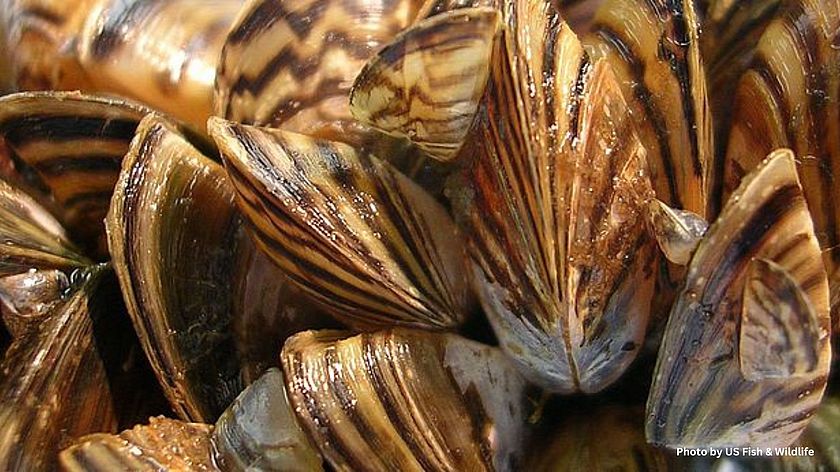
Once established, invasive species can reduce species diversity by out‐competing native species. Invasive plants can form mats along the surface of the water, preventing light from hitting native submersed plants. Their lack of natural predators allows them to grow to numbers where their food consumption drastically alters the food web. Invasive species are capable of causing extinctions of native plants and animals, reducing biodiversity, competing with native organisms for limited resources, and altering habitats. The impacts aren’t restricted to the underwater ecological dance: Round Goby (not yet in Lake Champlain but a species of high concern found in the Hudson River) prey on native fish prized by anglers. Water chestnut and Eurasian watermilfoil form dense mats of rooted vegetation that block the passage of boats and swimmers alike.
While controlling the 51 aquatic invasive species in Lake Champlain is critical to protecting ecological health, so is keeping new invasives out. There are many more invasives in nearby waterways connected to Lake Champlain. At last count, we know of 188 in the Great Lakes, 122 in the Hudson River, and 87 in the St. Lawrence River. Invasives can be extremely difficult to eliminate once established, so early detection of new species is very important. The Champlain Canal--that connects southern Lake Champlain to the Hudson River--and the Erie Canal system are major pathways for aquatic invasive species introduction, and are monitored by state and federal partners for key species. The Champlain Canal is a primary vector of invasive species spread from the Hudson River—it is likely that water chestnut passed through it when it entered southern Lake Champlain in the 1940s. Monitoring and rapid response in and near these vectors when a species is first introduced to Lake Champlain is our best bet against invasives, because once a species is established, eradication is usually no longer an option.
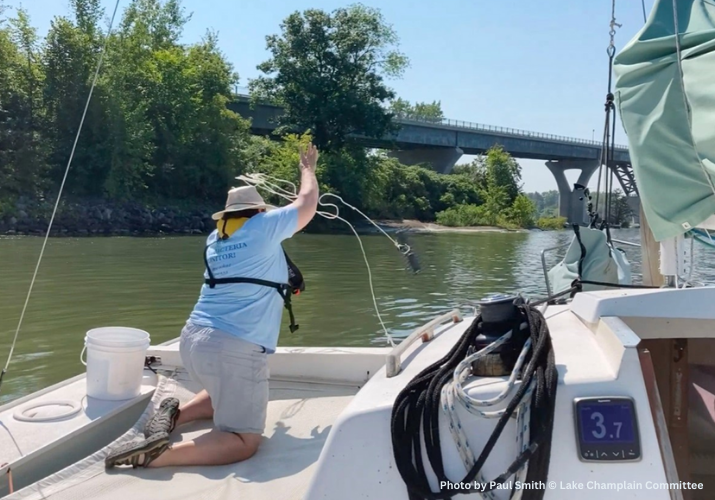
Humans have the greatest influence on the spread of invasive species—hitchhikers need a ride to get to where they’re going, and humans are highly-mobile hosts that give rides knowingly through releasing exotic aquarium plants, and unknowingly on watercraft. Fortunately, humans can also play a key role in early detection and spread prevention. That is why the Lake Champlain Committee (LCC) is piloting a volunteer community science program to monitor for invasive species. The Champlain Aquatic invasive Monitoring Program (CHAMP!) recruits, trains, and supports volunteers to survey for aquatic invasives at sites throughout Lake Champlain. Volunteers paddle or walk along a shoreline site, rake in samples of aquatic life (with a literal rake), and report their findings to LCC three times during the summer and fall. We hope to grow this program to cover high priority areas in Lake Champlain. To learn more about CHAMP and sign up for the 2024 season, contact LCC’s Education and Outreach Associate Eileen Fitzgerald at eileenf@lakechamplaincommittee.org and lcc@lakechamplaincommittee.org. With the data gathered by dedicated CHAMP volunteers, management professionals can identify populations for rapid response and build a database of information on where they aren’t established. Surveys aid in early detection -- we train volunteers in identification of “watch list” invasive species that have been reported in the Hudson River and other nearby waterbodies, but not yet Lake Champlain.
If surveying isn’t your thing but you want to help with invasive species spread prevention, LCC has a variety of other ways to get involved. We run a range of programs to engage community members in invasive species detection and control including shoreline monitoring for Asian Clam (found in Lake George and Lake George – but not in Lake Champlain yet) and water chestnut harvesting events. Water chestnut is one of the few invasive species where removal by hand is an effective control strategy for small populations and in areas where mechanical harvesters can’t access. Because water chestnut is an annual, expansion can be controlled by harvesting the plant before it forms or drops its seeds. Each plant can produce 15-20 seeds per season and they can remain viable for up to 12 years! If water chestnut is removed from root to stem before the seeds drop in late summer, the plant cannot reproduce and the removal effect is like pulling 20 plants in one. To get involved with aquatic invasive species monitoring and removal, fill out our Volunteer Response Form (https://www.lakechamplaincommittee.org/get-involved/volunteers/lake-champlain-committee-general-volunteer-response-form) and check the box for Aquatic Invasive Species Monitoring & Harvesting.
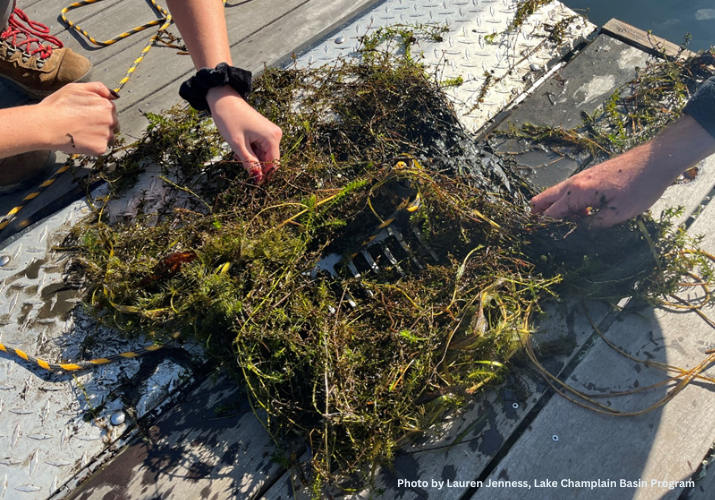
It is easy to feel separate from the ecological activity under Lake Champlain, but remember that you have an influence on it. Humans have already played a role in spreading invasive species to new places where they wreak havoc. Reversing this trend can start with careful checks on watercraft when recreating, remembering the mantra of “Clean, Drain, Dry”. The work to protect Lake Champlain from further spread and new introductions is ongoing, and there are many opportunities to lend a hand.
This project has been funded wholly or in part by the United States Environmental Protection Agency under assistance agreement (LC - 00A006950) to NEIWPCC in partnership with the Lake Champlain Basin Program (LCBP). NEIWPCC manages LCBP’s personnel, contract, grant, and budget tasks and provides input on the program’s activities through a partnership with the LCBP. The contents of this document do not necessarily reflect the views and policies of NEIWPCC, the LCBP, or the EPA, nor does NEIWPCC, the LCBP or the EPA endorse trade names or recommend the use of commercial products mentioned in this document.
Lake Look is a monthly natural history column produced by the Lake Champlain Committee (LCC). Formed in 1963, LCC is a bi-state nonprofit that uses science-based advocacy, education, and collaborative action to protect and restore water quality, safeguard natural habitats, foster stewardship, and ensure recreational access. You can join, renew your membership, make a special donation, or volunteer to further our work.
